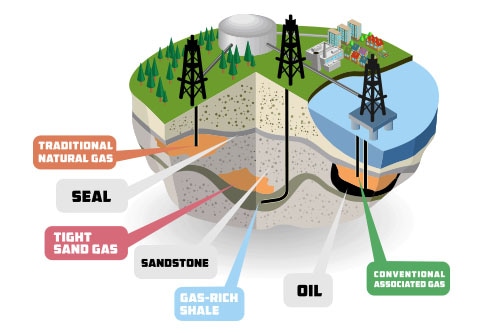
Natural gas is responsible for approximately 23 percent of all energy produced in the world. It is used to heat the homes of millions of people across the globe, but very few people take the time to understand what natural gas is and where it comes from.
Natural gas is an odorless and colorless substance composed of methane, ethane and propane. Carbon dioxide, hydrogen sulphide and nitrogen are the additional impurities that comprise a smaller percentage of natural gas’ composition.
There are two general types of natural gas. Biogenic gas originates from marshes, bogs and landfills, where methanogenic organisms manufacture the gas. Thermogenic gas is what comes from deep beneath the earth, where buried organic material breaks down under high temperature and pressure.
The natural gas that heats your home comes from deep beneath the earth, under several layers of rocks. The remains of plants and animals from millions of years ago were left buried under layers of rock and soil, before heat and pressure converted that matter into natural gas and petroleum.
To be more specific, natural gas is the result of methanogenic bacteria producing methane while in the process of decomposing organic material, coupled with the decomposition of kerogen. These two actions combine to complete catagenesis, the process that produces both petroleum and natural gas.
Once the gas has been created, it will attempt to migrate to a new location. The layers of the earth are molten rock, and those rocks can act as sponges for natural gas. Certain types of rocks within these layers contain large pores that act as storage units for natural gas.
To access these natural gases, companies drill hundreds of feet into the earth, pumping the gas into pipes. When piped to homes via boilers, furnaces or water heaters, this gas can serve to power ovens, gas-heated clothes dryers, central heating and cooling and more.